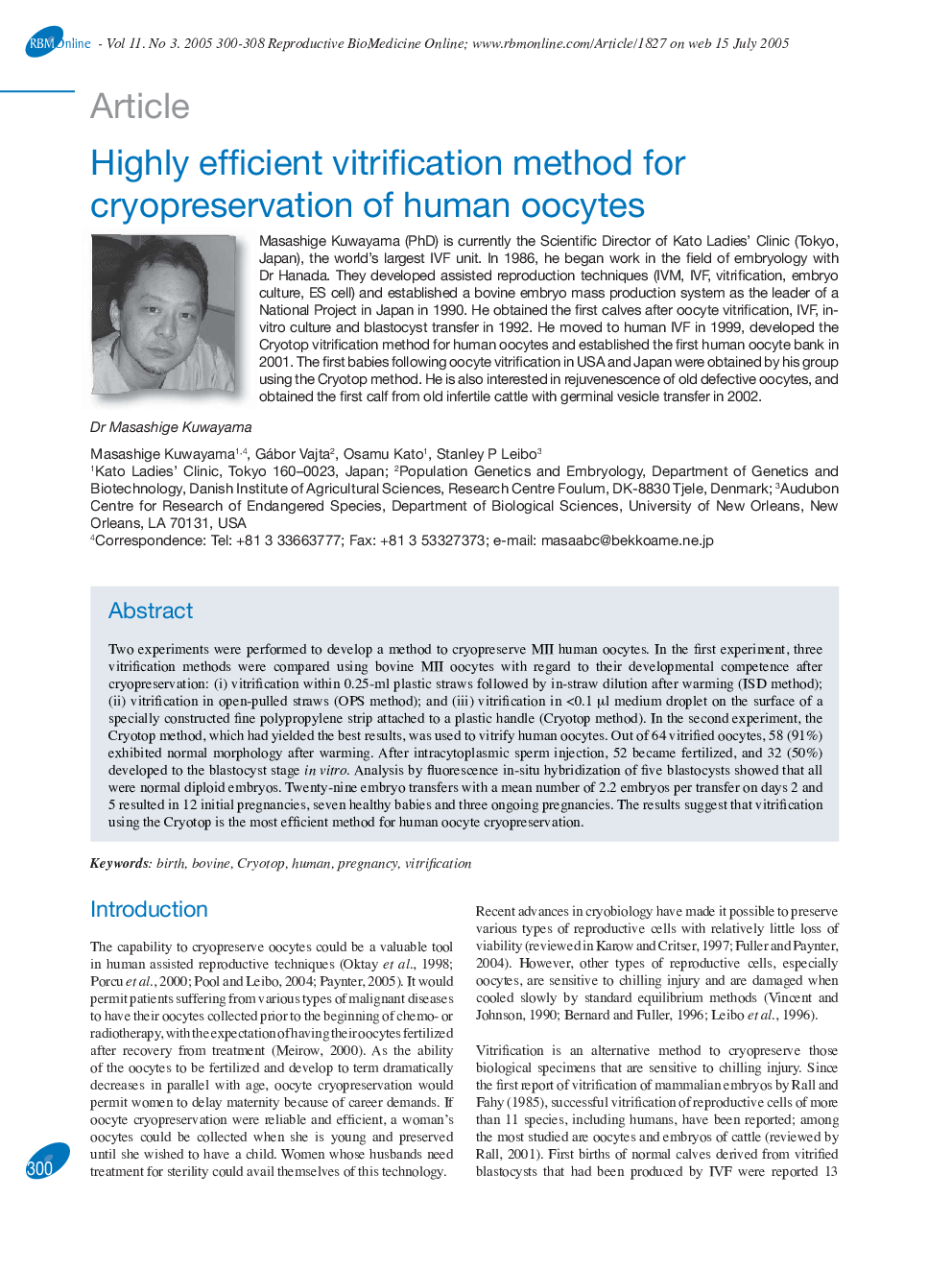| Article ID | Journal | Published Year | Pages | File Type |
|---|---|---|---|---|
| 9334686 | Reproductive BioMedicine Online | 2005 | 9 Pages |
Abstract
Two experiments were performed to develop a method to cryopreserve MII human oocytes. In the first experiment, three vitrification methods were compared using bovine MII oocytes with regard to their developmental competence after cryopreservation: (i) vitrification within 0.25-ml plastic straws followed by in-straw dilution after warming (ISD method); (ii) vitrification in open-pulled straws (OPS method); and (iii) vitrification in <0.1 μl medium droplet on the surface of a specially constructed fine polypropylene strip attached to a plastic handle (Cryotop method). In the second experiment, the Cryotop method, which had yielded the best results, was used to vitrify human oocytes. Out of 64 vitrified oocytes, 58 (91%) exhibited normal morphology after warming. After intracytoplasmic sperm injection, 52 became fertilized, and 32 (50%) developed to the blastocyst stage in vitro. Analysis by fluorescence in-situ hybridization of five blastocysts showed that all were normal diploid embryos. Twenty-nine embryo transfers with a mean number of 2.2 embryos per transfer on days 2 and 5 resulted in 12 initial pregnancies, seven healthy babies and three ongoing pregnancies. The results suggest that vitrification using the Cryotop is the most efficient method for human oocyte cryopreservation.
Related Topics
Health Sciences
Medicine and Dentistry
Obstetrics, Gynecology and Women's Health
Authors
Masashige Kuwayama, Gábor Vajta, Osamu Kato, Stanley P Leibo,
